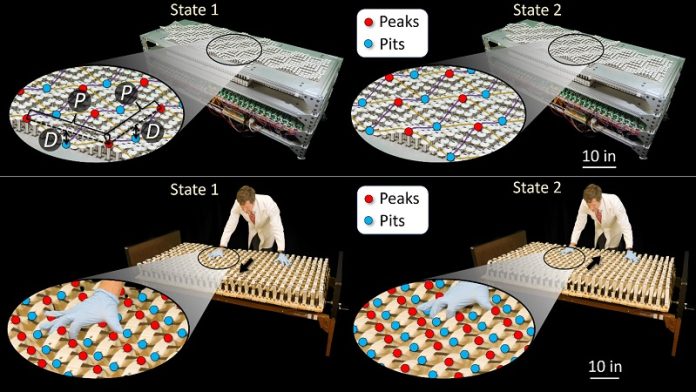
Researchers at UCLA have created a new kind of mattress that could make a big difference for people stuck in bed for long periods.
This smart mattress automatically changes the pressure on different parts of the body to help prevent painful and dangerous bedsores—also known as pressure ulcers.
Bedsores happen when a person lies in one position for too long, and the constant pressure blocks blood flow to certain parts of the body.
Over time, this lack of circulation can damage the skin and tissue, leading to open wounds that are hard to treat. Bedsores are a serious problem for people who are sick, elderly, or have limited mobility, and they cause more than 60,000 deaths in the U.S. each year.
Treating them costs hospitals around $11 billion annually.
To prevent bedsores, hospital staff are usually required to turn or reposition patients every two hours.
But this is difficult to do consistently, especially in busy healthcare settings, and it can also be hard on caregivers.
That’s why the team at UCLA Samueli School of Engineering designed a mattress that can shift pressure automatically.
The mattress works by gently raising and lowering small sections of its surface, much like a checkerboard. Imagine black squares rising to support the body while white squares sink to relieve pressure—and then after some time, they switch.
This repeating pattern helps keep blood flowing by ensuring no single part of the body is under pressure for too long.
What’s different about this mattress is that instead of just lowering pressure in all areas, it sometimes increases pressure in certain spots—within safe and comfortable limits. The researchers found that this pressure difference can actually improve blood flow better than just trying to reduce pressure everywhere.
The goal is to alternate which parts of the body take on the most pressure, and to limit that to only about half the time.
The design includes nearly 30 balancing springs that help the surface move smoothly and gently. The mattress also has embedded sensors and special software that adjusts the movement based on a person’s height and weight. This allows it to give each patient the best possible support. It can be set in motion by a small motor or even moved by hand if needed.
In tests, the team placed the mattress on a regular hospital bed and used a 220-pound dummy with a sensor-equipped foam pad to measure how pressure changed across the body. The system successfully kept pressure below the level that would cut off blood flow.
Compared to current alternating-pressure mattresses, which often rely on large air chambers, the UCLA version offers more precise pressure control and airflow. Its parts are also easy to clean, and the foam pad with sensors can be replaced if needed.
The team has already patented the core technology and is working on more patents for the mattress’s mechanical parts. The prototype is now being tested with real people in a lab setting to see how well it works in daily use. If successful, this mattress could become a powerful tool to protect vulnerable patients from the risks of bedsores—without placing extra burden on caregivers.



